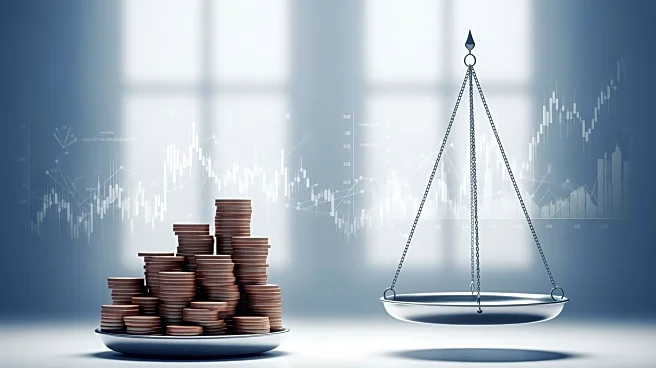What's Happening?
Recent third-quarter earnings reports from various consumer companies are highlighting a divided U.S. economy, characterized by a 'K-shaped' recovery. Wealthier Americans are increasing their spending, while lower-income individuals are cutting back due
to rising inflation and higher prices for essentials. The consumer price index rose by 0.3% in September, with an annual inflation rate of 3%. The Federal Reserve has responded by cutting interest rates, but the ongoing government shutdown is affecting federal workers' pay. The Census Bureau reports that 35.9 million people were in poverty in 2024, with a median household income of $83,730. The top 10% of earners saw income growth, while the bottom 10% did not. Companies like Chipotle and Coca-Cola are seeing spending shifts, with wealthier consumers driving growth in premium products.
Why It's Important?
The earnings reports underscore the growing economic disparity in the U.S., with significant implications for consumer behavior and business strategies. Companies are adjusting their offerings to cater to a bifurcated market, with some expanding value menus and others focusing on premium products. This economic divide could influence public policy and economic strategies, as policymakers may need to address the challenges faced by lower-income households. The trend also highlights the resilience of wealthier consumers, who continue to benefit from stock market gains and rising home values, potentially widening the economic gap further.
What's Next?
As more companies report their earnings, the trend of a divided economy is expected to continue. Businesses may need to adapt their strategies to cater to both ends of the economic spectrum. Policymakers might consider measures to support lower-income households, such as targeted fiscal policies or social programs. The ongoing government shutdown and its impact on federal workers could also influence economic conditions and consumer confidence. Stakeholders will be closely monitoring these developments to assess their long-term implications on the U.S. economy.














